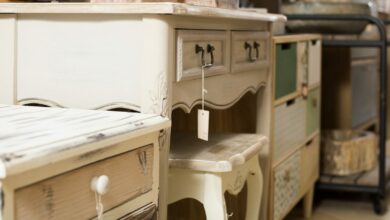Apartment Management Magazine Dear Maintenance Men:


By Jerry L’Ecuyer & Frank Alvarez
Dear maintenance men:
I am starting my planning for a major kitchen cabinet renovation project in my rental units. However, I find it difficult to make material and design decisions. What recommendations can you give?
Allen.
Dear Allen,
When selecting materials for the kitchen or bathroom, a consistent and functional design is important. Kitchen and bathroom overhauls are some of the most expensive jobs you can do in an apartment and proper planning is a must. In order to appeal to a larger segment of the population, try to keep the interior color scheme with neutral earth tones. The quality of the cabinets varies considerably. Don’t be fooled by the cabinet fronts. Manufacturers have designed their cabinets to look good at first glance. Keep in mind that, being in a rental environment, cabinets must also withstand abuse. Look at the actual construction of the box or cabinet frame. Keep in mind; you don’t need to use custom cabinets to fit your existing layout. Using prefabricated modular cabinets can dramatically reduce the time and cost of having a finished kitchen or bathroom. Using real wood cabinet fronts with 3/8 ” plywood sides is essential for durability. The fronts and sides of the drawers should be joined by a dovetail or other positive locking construction. Drawers that are held together by nails or cabinets constructed with particle board do not stand up to tenant abuse.
On a side note; if you are emptying the kitchen or bathroom, use that time to move out and add more electrical outlets and lighting under the cabinets.
Dear maintenance men:
I need caulk in my building both inside and outside of the units. I need advice. The hardware store has a lot of types of caulk and I don’t know what to buy !!! Can you explain the different types of caulk and where to use them?
Franc
Dear Frank:
We understand! It can be confusing. Let’s try to break down the most common types of caulks and when and where to use them.
1: Acrylic latex caulk (painter’s putty): inexpensive, easy to use, cleanable with water.
Do not use in damp places such as bathroom or kitchen or outdoors. Designed to be painted.
2: Vinyl Latex Caulk: Easy to use, water cleaning and can be used outdoors. Not very flexible; use in expansion joints is not recommended.
3: Acrylic tile sealer: Easy to use, cleanable with water. The sealant is perfect for bathrooms and kitchens and other wet areas. It is mildew and mildew resistant. Can be painted.
4: Silicone-coated acrylic sealant: Easy to use, clean with soap and water or solvent. Perfect for porcelain tiles, metal and glass. Similar to acrylic tile sealer, but stronger and more durable.
5: Pure silicon: Ideal for non-porous surfaces. Durable caulk, interior / exterior. Super flexible and strong. More difficult to use than any of the caulks above. Solvent cleaning. Resistant to mildew and mildew. Could smell until he was healed.
6: Butyl rubber: The best use is outdoors. Messy to use. Perfect for sealing roofs, valleys, gutters, flashings and foundations. Resists humidity and movement. Sticks to everything. Clean with solvents.
7: Elastomeric Latex Caulk: Water cleaning. The most durable caulk. Excellent adhesion to almost any surface and can stretch almost 200%. Elastomeric sealant is very tolerant of extreme temperatures and extreme weather conditions. It is most often used outdoors. This caulk can fill gaps up to 2 inches wide and deep. The putty dries very quickly; Tool the caulk immediately after application.
Dear maintenance men:
I have a toilet that works every ten or twenty minutes. I replaced the fill valve, flapper valve and even rubbed under the rim! In other words, all the parts I can think of that are replaceable in the tank are new. What else should I watch?
sat
Dear Sam:
You replaced all of the easier ones !! When all else fails on a toilet leak problem; it’s time to put on your rubber gloves and get an adjustable wrench. Chances are, the problem is with the flush valve seat. Rubber flapper valve closes against flush valve seat (the large hole at the bottom of the tank.) to keep water in the tank or let water out of the tank. The seat may have burrs, cracks, or calcium deposits that allow a small amount of water to seep past the rubber flush valve. Sanding the seat to remove burrs or calcium build-up is a short-term solution and rarely fixes the problem for long. A permanent solution is to replace the flush valve. Shut off the water supply first, completely empty the tank and remove the water line. Remove the two or three bolts that hold the tank to the toilet bowl. Turn the tank upside down and remove the large nylon or brass nut that holds the flush valve to the tank. Install the new flush valve. Make sure the bottom of the tank is clean and that no debris gets between the rubber gasket of the new valve and the tank. Tighten the large nut on the outside of the tank and you are ready to reassemble the tank and bowl and put the toilet back into action. When reassembling the reservoir to the bowl, install new rubber washers and bolts.
WE NEED astrophysics questions !!! If you would like to see your service-related question in the “Dear Service Technicians” column, please send your questions to: [email protected]
Organic:
If you need maintenance or consultation work for your building or project, please do not hesitate to contact us. We are available throughout Southern California. For an appointment, please call Buffalo Maintenance, Inc. at 714 956-8371
Frank Alvarez is a licensed contractor and the director of operations and co-owner of Buffalo Maintenance, Inc. He has been involved in the maintenance and construction of apartments for over 30 years. Frankie is president of the Orange County Apartments Association and a speaker, educational instructor and chair of the AAOC Education Committee. He is also Chairman of the Product Service Counsel. Frank can be reached at (714) 956-8371 [email protected] For more information, please visit: www.BuffaloMaintenance.com
Jerry L’Ecuyer is a real estate broker. He is currently director emeritus and former president of the Orange County Apartment Association and former chairman of the association’s education committee. Jerry has been involved with the apartments as a professional since 1988.



